한식 읽기 좋은 날
Vol 55. Flavors of HANSIK Enriched by the Wind
Gimbap: Simple but Requiring Dedication
HANSIK in Media Content
The protagonist of the recently-aired drama Extraordinary Attorney Woo describes gimbap as follows: “Gimbap is trustworthy. You can see all of the ingredients at a glance. This means that you won’t be surprised by the taste or texture.” For the protagonist, who is autistic, gimbap is a reliable lunch menu option. Perhaps the same is true for everyone, regardless of their circumstances or social status. Gimbap is a simple, filling meal that has been enjoyed by generations of Koreans and, today, is becoming appreciated by non-Koreans as well.
Article Cha Yeji (Editorial Team)
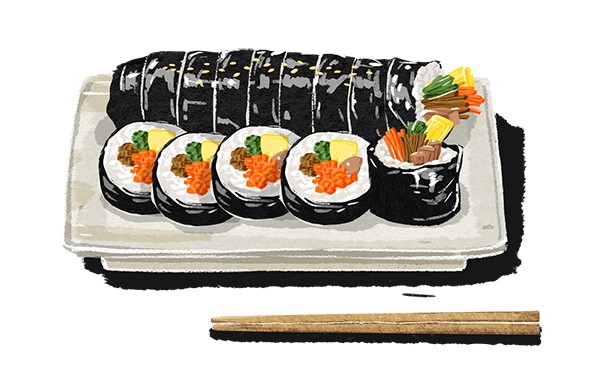
A healthy meal full of vegetables
Today, there is a truly wide range of ingredients that are considered “gimbap-acceptable.” Generally, however, the basic ingredients are simple: rice, spinach, carrots, burdock, and danmuji (mild pickled radish). While this is sometimes embellished with eggs or ham, it is clear that the most standard form of gimbap is vegetarian—down to the rice and laver. Several recent TV programs featured foreigners trying gimbap for the first time, observing that it must be very healthy and, half-jokingly, that Koreans must not be obese because they eat a lot of such healthy foods.
Indeed, gimbap is very nutritionally-balanced because of the inclusion of several vegetables—a fact that Koreans often fail to notice because it is such a commonplace food. The laver, a type of seaweed, is processed in various ways: the laver used for gimbap is salted much less than the kind that is used as a side dish. In other words, the laver is low in sodium and rich in vitamins C and E. Laver also has a lot of beta-carotene, a substance that prevents the spread of toxins in the body, and minerals, such as iodine, calcium, and magnesium. Carrots, a major gimbap ingredient, are also rich in beta-carotene. Its high fiber and iron content make the carrot effective in preventing constipation and lowering cholesterol levels. Gimbap is a nutritionally-balanced meal because of its combination of rice (carbohydrates), egg or ham (protein), and the multiple nutrients in vegetables.
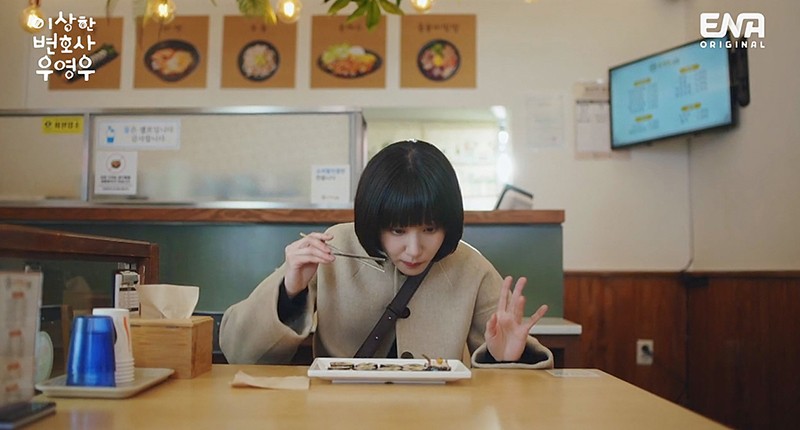
Source: ENA
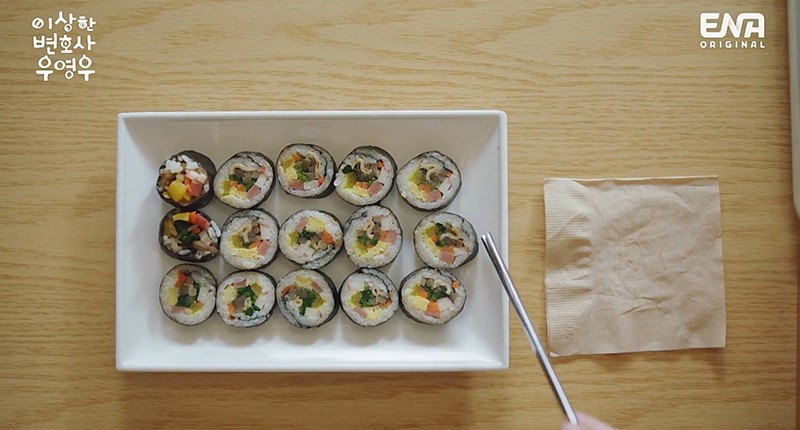
Too pretty to eat
The image of gimbap that first comes to mind is a cylindrical black roll cut horizontally into circles of uniform thickness, with the combination of white rice evenly surrounding the multi-colored ingredients being quite aesthetically pleasing. Today, the basic version of gimbap is sometimes overshadowed by “artistic” versions, the ingredients of which are arranged in such a way that the gimbap shows a certain shape (usually, an animal, heart, or popular cartoon character) when cut. In Korea, there is even a certificate given by a private organization that proves one’s expertise in “character gimbap art.” There is a Korean saying that goes: “a rice cake that looks good tastes good, too.” As if to prove the veracity of this saying, the popularity of creatively-designed gimbap seems to be here to stay.
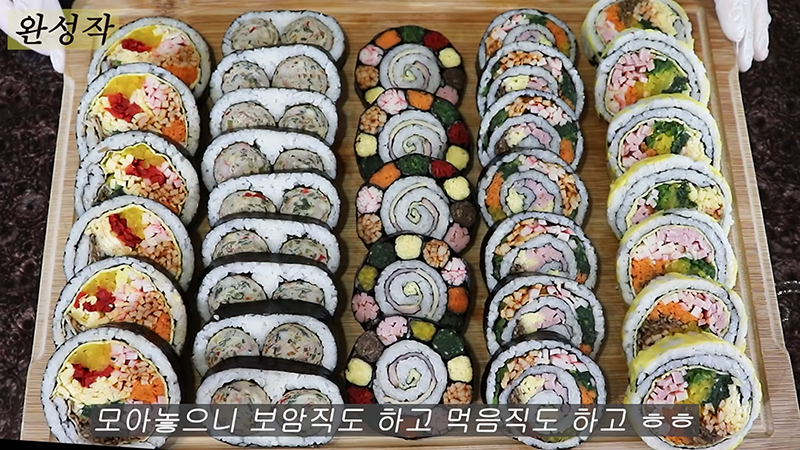
Source: Saljjiuneuneomma (mom fattening kids) YouTube channel
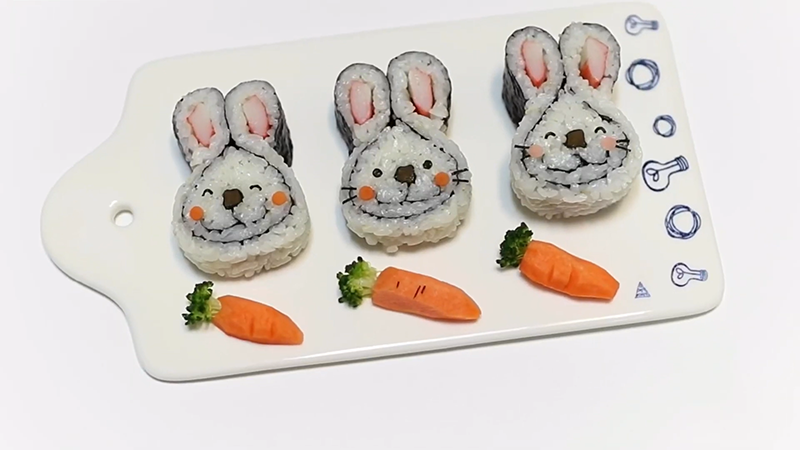
Source: Kkoyacharacterdosirak (Kkoya character packed lunches) YouTube channel
What to include in it, what to eat it with
What gimbap tastes like is, of course, determined by the ingredients. However, gimbap is also categorized by its format and what it is served with. Many of these categories, such as kkoma gimbap and chungmu gimbap, are specific to a region or consumer base.
Kkoma gimbap (“kid’s gimbap” or “mini-gimbap”) is made with half of a normal-sized sheet of laver. The most popular type of kkoma gimbap is currently mayak (“drug”) gimbap, which is dipped in mustard sauce and named as such because of the addictiveness of its flavor. Mayak gimbap began being sold in Gwangjang Market, which is located in Seoul’s Jongno-gu district, and is being increasingly used as a proper noun. The popularity of mayak gimbap, which is easy to eat because of the small pieces and tartness of the mustard sauce, is now such that many foreign tourists visit Gwangjang Market specifically to eat it.
Chungmu gimbap is made by serving kkoma gimbap, which is made using only rice and laver, with a side of squid and radishes mixed with a spicy sauce. The name comes from the former name (Chungmu) of Tongyeong, a city in Gyeongsangnam-do, while the content is inspired by the lunches that sailors of the 1930s took with them to sea. Because rolling the ingredients up with the rice, as in standard gimbap, can cause the rice to spoil quickly, only rice was rolled into the laver, with the other ingredients being packed separately. The unexpectedly filling and delicious combination of rice, laver, and one side dish continues to intrigue consumers today.
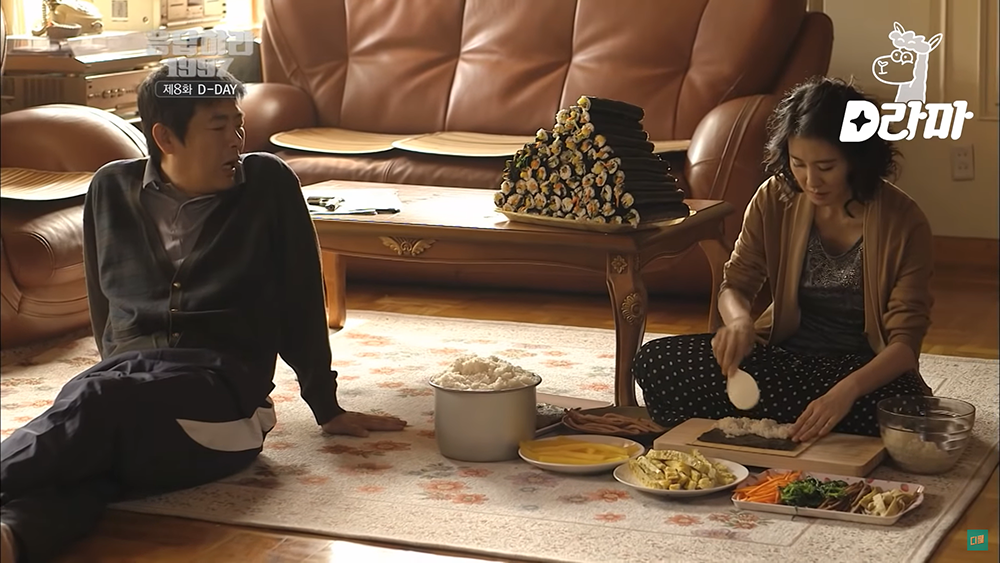
Source: Diggle Classic
A work of dedication: Homemade gimbap
Gimbap has evolved significantly in the 21st century. For most Koreans, however, it is still a nostalgic dish due to their memories of eating homemade gimbap at school picnics. Contrary to its image as a “home-cooked” meal, gimbap is actually quite difficult to make because it involves so many steps. Each ingredient must be stir-fried separately, and the rice must be seasoned. Furthermore, gimbap can burst or become misshapen while being rolled and spoil if left at room temperature for too long. It may look as easy to prepare as it is to eat, but this is far from true!
In many Korean TV dramas and movies, gimbap is presented based on an uplifting memory of gimbap that is common to consumers of all ages. The mother of a family is depicted rolling gimbap one by one, with all of the ingredients she needs already prepared and laid out. It is also used as a device that emphasizes a character’s humble background: in this case, the character’s parents operate a gimbap restaurant or a store that sells gimbap. It is a food that is both closely related to our daily lives and a symbol of a happy childhood. Gimbap, which is delicious, healthy, and strongly associated with positive childhood memories, is a trustworthy food indeed.

 한국어
한국어
 English
English






